The black lug are the larger of the two species being from 6" long up to 18" long and usually black or dark brown coloured. Blow lug grow up to about 6ins long, the colouring is usually red to mid brown, though when living in rotted down weed amongst the sand they do turn almost black.
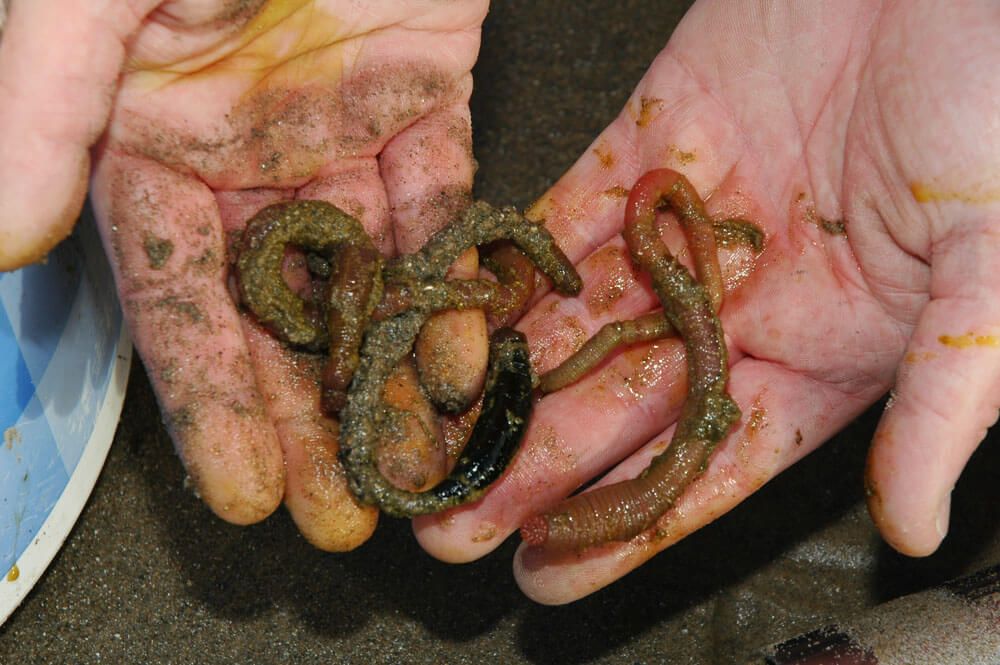
LOCATION - BLOW LUG
Blow lug favour lee shores protected from the worst of the weather. They are rarely found in numbers along the higher reaches of a true surf or flash beach, but may be in small colonies in a corner of the beach protected from the elements. The best numbers of blow lug are mostly found in an estuary environment living along the sides of the permanently wet run off creeks amongst mud and sand.
Blow lug leave a tell tale round cast with an adjacent blow hole within a few inches. The worm lives in a U shaped burrow directly below and between the cast and blow hole. These casts over a dense worm colony are an easy give away for location. Such areas uncover with every tide, including the smallest neaps.
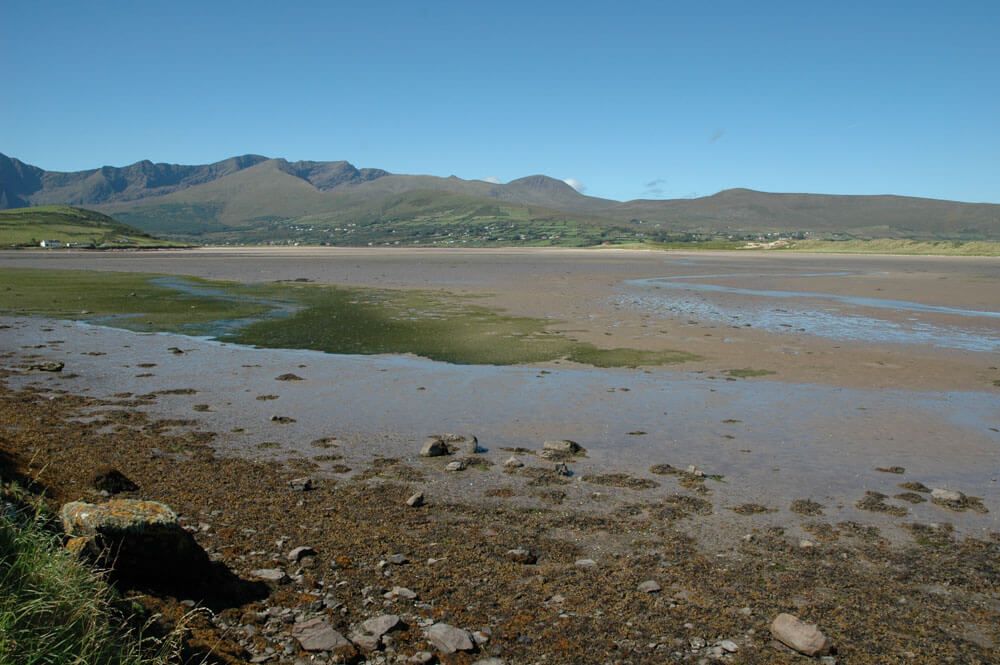
COLLECTION - BLOW LUG
Because blow lug live in dense groups they can be trenched with a fork. The best fork is the four pronged, flat tined potato fork.
There is a right and wrong way to trench. The wrong way is to indiscriminately dig long single fork width trenches or to dig round shaped holes. This leaves a savage scar on the mud flats and can upset other non angling estuary users.
The correct method is basically the same as when digging the garden. Start by taking a fork of sand out and turning it back into the same hole upside down to reveal any worms. Work a trench across in front of you for a few feet, then go back to the original end and start a new trench directly behind the old one. In this way the flooding tide will flatten off the turned sand and over a few tides no evidence of you ever being there will exist.
It pays when trenching to select the slightly lower wetter areas of sand rather than the higher and drier areas which may have plenty of casts on, but the worms here will be much deeper down.
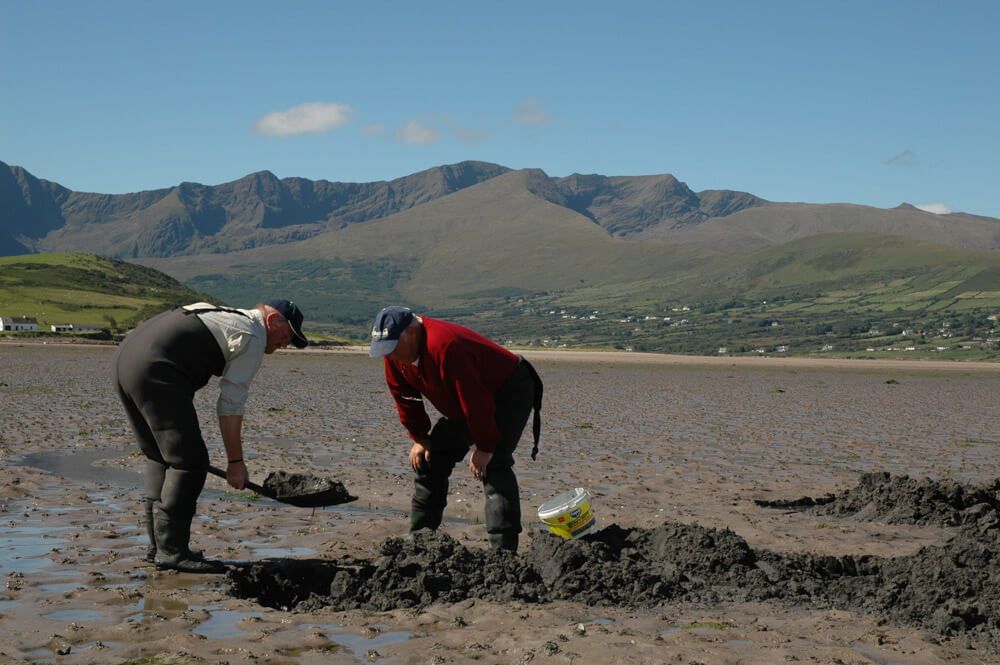
TIDES
The tides effect the collection of blow lug. The worms tend to be deeper while the tide is still ebbing, but as soon as the new tide starts to flood the worms rise in the sand and are easier to dig. This even applies to worm beds well away from the sea high up in the estuary flats.
WEATHER EFFECTS
Expect blow lug to move deeper down in the sand during periods of hard frosts. In fact, this is one time when the digging may be more successful during ebb tides when the beds are just uncovering and the sand has been warmed by the water.
Periods of high pressure are less good for digging than low pressure systems ie, those surrounding unsettled weather patterns. The higher the air pressure, the deeper the worms go.
STORAGE - BLOW LUG
Blow lug should be wrapped 20 per packet in several sheets of newspaper and kept in a cool temperature such as a domestic fridge and carried to the beach etc, in a cool box with ice packs placed in the top. It pays to change the newspaper everyday and also check for any dead worms. In this way, blow lug will keep for up to 5 days without major casualties.
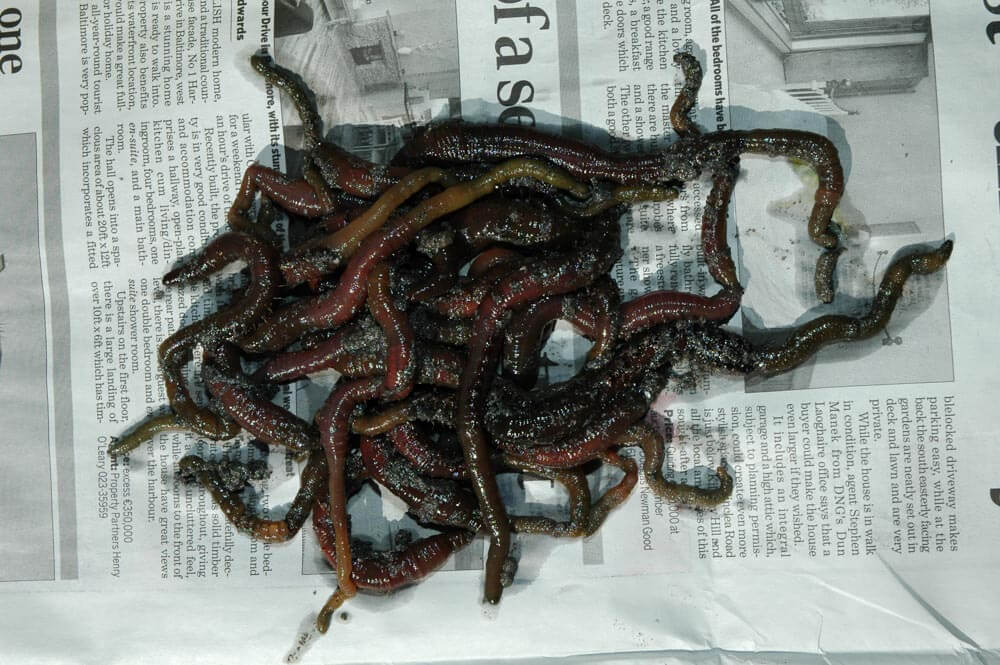
LOCATION - BLACK LUG
Black lug have totally different habits and locations. They are found only along the immediate low water line of the higher medium to larger spring tides. Often, collection is only possible on a half dozen tides per month in some areas. Blacks burrow differently, too!. They live in a vertical or near vertical burrow underneath a small black coloured cast, but unlike the blow lug there is no adjacent blow hole. Blacks are at their most numerous close to areas that hold water such as along shallow banks and in the middle of drained gullies.
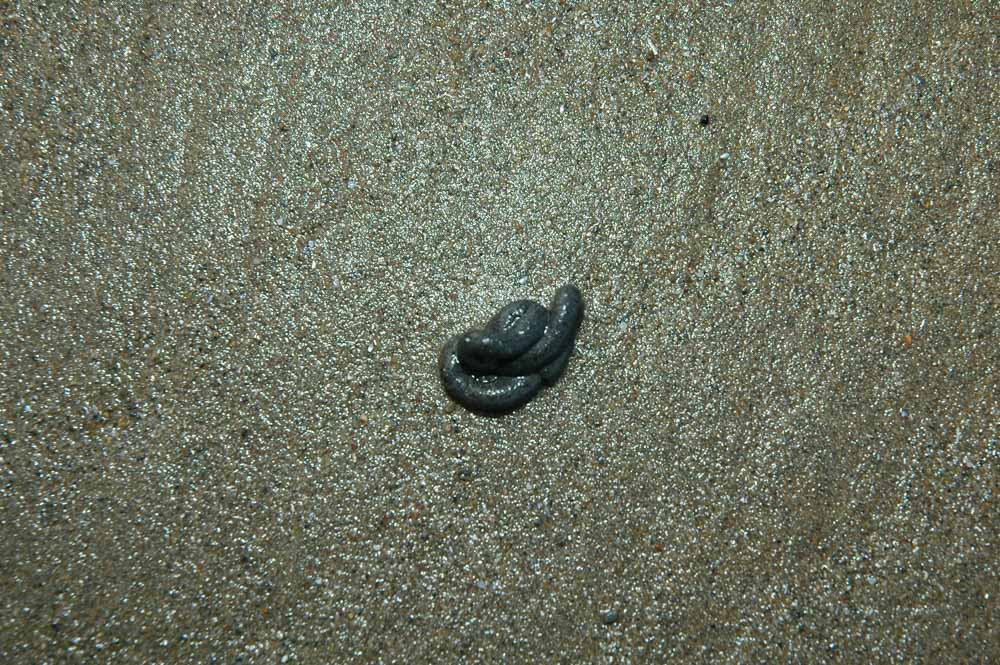
COLLECTION - BLACK LUG
Black lug are individuals and cannot be trenched like blow lug. You have a choice of collection methods, either with a spade or by a bait pump. The spade needs to be a special draining spade with a narrow cutting edge and wider top. These are often sold under the name of "Peat Spades".
To dig black with a spade means walking the low tide line until you spot the black cast. Place the spade about 6" in front of the cast and take out a spade of sand about 8" deep. Now take another cut directly behind the cast an d as deep as you can. The worm is usually in this second cut. Some diggers prefer to make three cuts starting further in front of the cast with a shallow cut, then another just in front and the last deep one just behind the cast to reveal the worm.
Many diggers have now forsaken the spade in preference of the bait pump. This requires a similar techniques to extract the worm. Put the pump base over the cast and take a core of sand only about 6" deep out. Back down the hole and go as deep as you can with the second pump. As you lift the pump free of the hole pump out the core flat on the sand and the worm should be visible. Occasionally, and it's worth doing anyway, break open the core to reveal any hidden worms.
Black do not always conform to this vertical burrow habit and in some areas, especially those where sub surface stone and pebble exists, will burrow at a slight angle causing some worms to be chopped off.
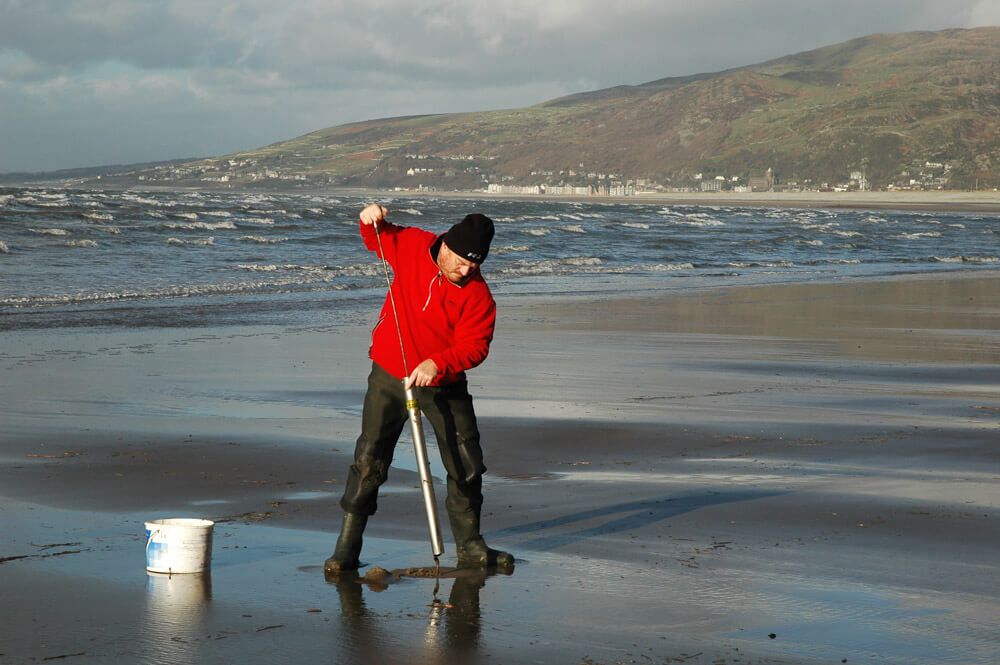
TIDES
Black lug are dramatically affected by the tides, also! You will see isolated casts on the last of the ebb tide, but as soon as the tide turns to flood again you'll notice casts popping up everywhere. This is the peak time to pump and the worms will move closer to the surface.
WEATHER EFFECTS
Only accessible towards the low water period and their deeper burrowing habit keeps black lug protected from the worst of the frosty weather and such conditions makes little difference to collection.
The air pressure effects them though, with low barometric pressure being better than persistent high pressure. Having said that, high pressure systems tend to push the tide further out than predicted and expose sand that rarely gets the opportunity to be pumped.
STORAGE - BLACK LUG
Ungutted black lug need to be stored for immediate use the same way as blow lug are, and the same applies to worms that will be used within a couple of days, though you may need to gut them for this. For longer term storage they will need to be gutted by nipping the heads off to release the guts, then placed separately 5 or 6 worms across a sheet of newspaper, and stored again in the fridge. They can also be deep frozen this way. Change the paper every day or two depending how damp it gets.
Try not to handle black lug with your bare fingers, it's the heat of your fingers that burns their skins and makes them explode. You'll notice that if handled with wet industrial gloves far fewer worms suffer from expansion of the body ending in their quick demise.
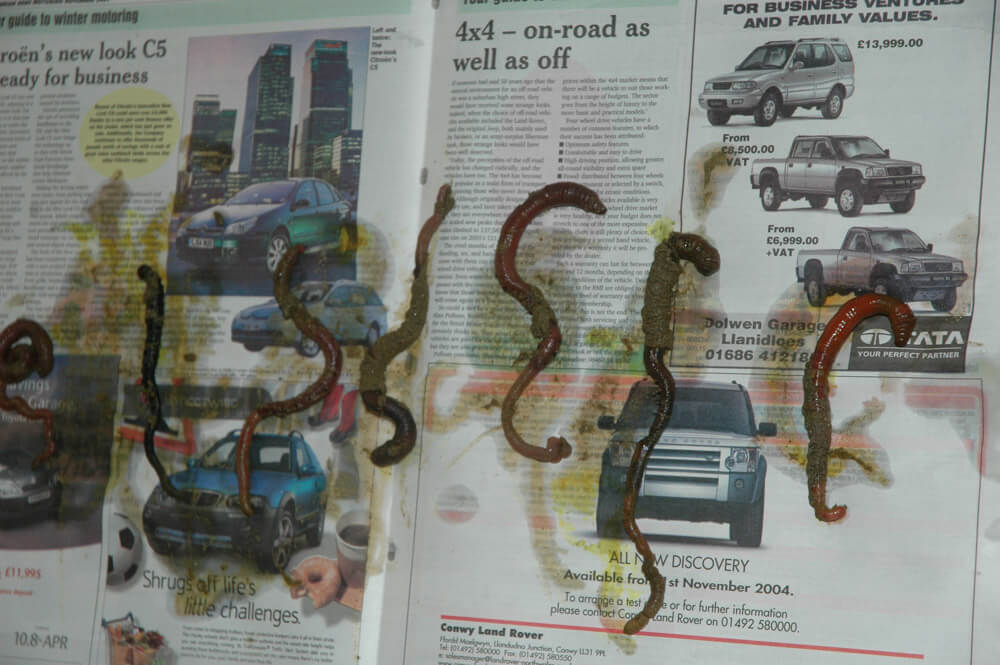
PRESENTATION
Lug is particularly affective fished uptide for winter cod and codling on pennel rigs. Small 1inch lengths of black are excellent for dabs even if the worm is past it's best. Lug works well for spring plaice as part of a combination bait with sandeel or crab. Surprisingly, it's one of the best baits for rock living wrasse in the summer. Used to bait feathers during the winter it will take codling, whiting, and in the Northeast, occasional haddock as well.
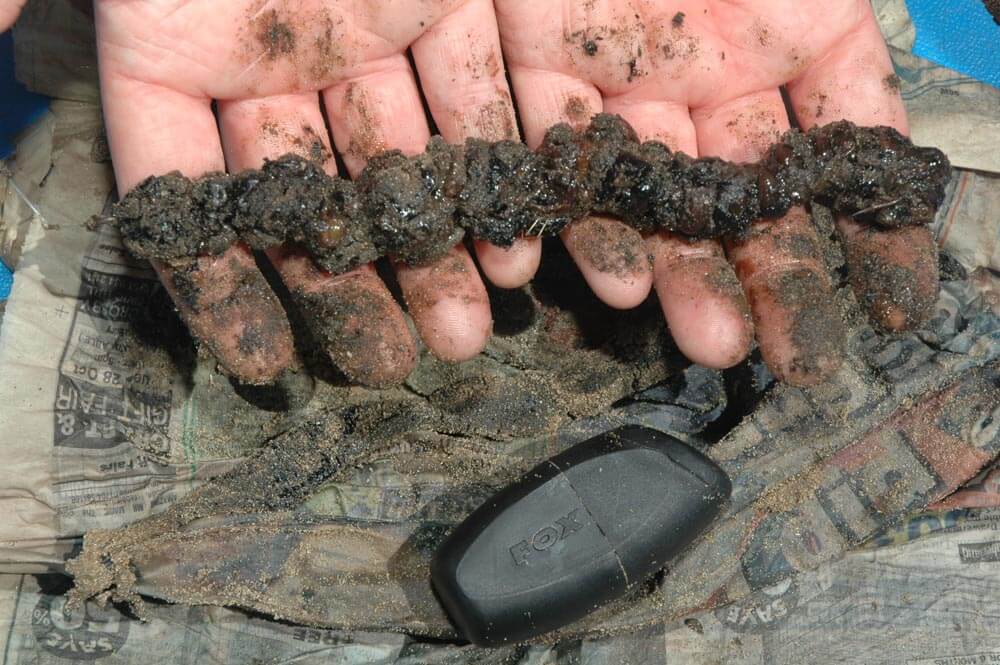
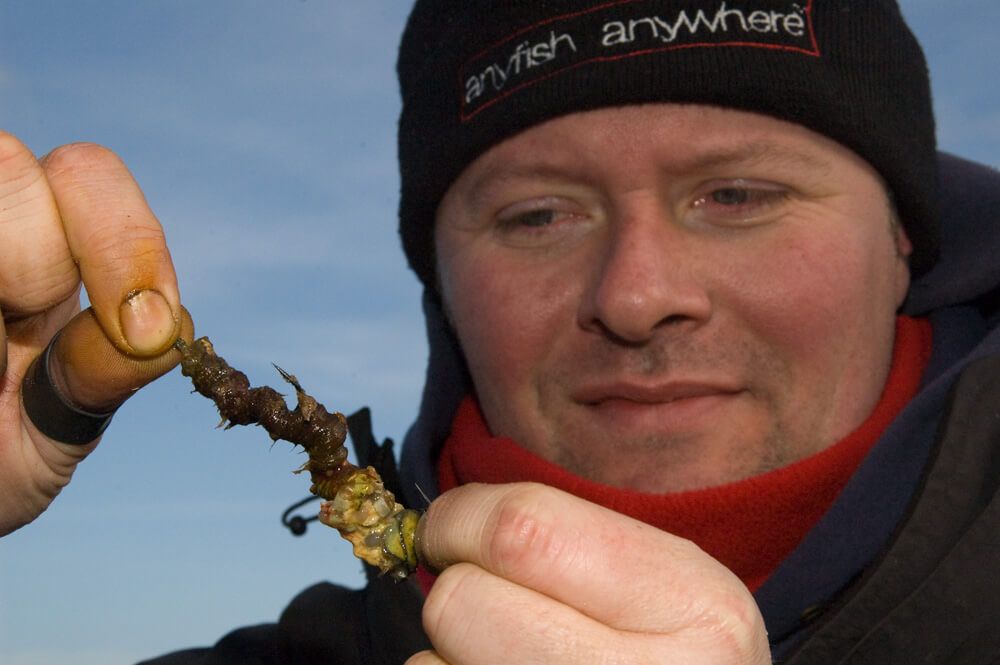

LOCATION - BLOW LUG
Blow lug favour lee shores protected from the worst of the weather. They are rarely found in numbers along the higher reaches of a true surf or flash beach, but may be in small colonies in a corner of the beach protected from the elements. The best numbers of blow lug are mostly found in an estuary environment living along the sides of the permanently wet run off creeks amongst mud and sand.
Blow lug leave a tell tale round cast with an adjacent blow hole within a few inches. The worm lives in a U shaped burrow directly below and between the cast and blow hole. These casts over a dense worm colony are an easy give away for location. Such areas uncover with every tide, including the smallest neaps.

COLLECTION - BLOW LUG
Because blow lug live in dense groups they can be trenched with a fork. The best fork is the four pronged, flat tined potato fork.
There is a right and wrong way to trench. The wrong way is to indiscriminately dig long single fork width trenches or to dig round shaped holes. This leaves a savage scar on the mud flats and can upset other non angling estuary users.
The correct method is basically the same as when digging the garden. Start by taking a fork of sand out and turning it back into the same hole upside down to reveal any worms. Work a trench across in front of you for a few feet, then go back to the original end and start a new trench directly behind the old one. In this way the flooding tide will flatten off the turned sand and over a few tides no evidence of you ever being there will exist.
It pays when trenching to select the slightly lower wetter areas of sand rather than the higher and drier areas which may have plenty of casts on, but the worms here will be much deeper down.

TIDES
The tides effect the collection of blow lug. The worms tend to be deeper while the tide is still ebbing, but as soon as the new tide starts to flood the worms rise in the sand and are easier to dig. This even applies to worm beds well away from the sea high up in the estuary flats.
WEATHER EFFECTS
Expect blow lug to move deeper down in the sand during periods of hard frosts. In fact, this is one time when the digging may be more successful during ebb tides when the beds are just uncovering and the sand has been warmed by the water.
Periods of high pressure are less good for digging than low pressure systems ie, those surrounding unsettled weather patterns. The higher the air pressure, the deeper the worms go.
STORAGE - BLOW LUG
Blow lug should be wrapped 20 per packet in several sheets of newspaper and kept in a cool temperature such as a domestic fridge and carried to the beach etc, in a cool box with ice packs placed in the top. It pays to change the newspaper everyday and also check for any dead worms. In this way, blow lug will keep for up to 5 days without major casualties.

LOCATION - BLACK LUG
Black lug have totally different habits and locations. They are found only along the immediate low water line of the higher medium to larger spring tides. Often, collection is only possible on a half dozen tides per month in some areas. Blacks burrow differently, too!. They live in a vertical or near vertical burrow underneath a small black coloured cast, but unlike the blow lug there is no adjacent blow hole. Blacks are at their most numerous close to areas that hold water such as along shallow banks and in the middle of drained gullies.

COLLECTION - BLACK LUG
Black lug are individuals and cannot be trenched like blow lug. You have a choice of collection methods, either with a spade or by a bait pump. The spade needs to be a special draining spade with a narrow cutting edge and wider top. These are often sold under the name of "Peat Spades".
To dig black with a spade means walking the low tide line until you spot the black cast. Place the spade about 6" in front of the cast and take out a spade of sand about 8" deep. Now take another cut directly behind the cast an d as deep as you can. The worm is usually in this second cut. Some diggers prefer to make three cuts starting further in front of the cast with a shallow cut, then another just in front and the last deep one just behind the cast to reveal the worm.
Many diggers have now forsaken the spade in preference of the bait pump. This requires a similar techniques to extract the worm. Put the pump base over the cast and take a core of sand only about 6" deep out. Back down the hole and go as deep as you can with the second pump. As you lift the pump free of the hole pump out the core flat on the sand and the worm should be visible. Occasionally, and it's worth doing anyway, break open the core to reveal any hidden worms.
Black do not always conform to this vertical burrow habit and in some areas, especially those where sub surface stone and pebble exists, will burrow at a slight angle causing some worms to be chopped off.

TIDES
Black lug are dramatically affected by the tides, also! You will see isolated casts on the last of the ebb tide, but as soon as the tide turns to flood again you'll notice casts popping up everywhere. This is the peak time to pump and the worms will move closer to the surface.
WEATHER EFFECTS
Only accessible towards the low water period and their deeper burrowing habit keeps black lug protected from the worst of the frosty weather and such conditions makes little difference to collection.
The air pressure effects them though, with low barometric pressure being better than persistent high pressure. Having said that, high pressure systems tend to push the tide further out than predicted and expose sand that rarely gets the opportunity to be pumped.
STORAGE - BLACK LUG
Ungutted black lug need to be stored for immediate use the same way as blow lug are, and the same applies to worms that will be used within a couple of days, though you may need to gut them for this. For longer term storage they will need to be gutted by nipping the heads off to release the guts, then placed separately 5 or 6 worms across a sheet of newspaper, and stored again in the fridge. They can also be deep frozen this way. Change the paper every day or two depending how damp it gets.
Try not to handle black lug with your bare fingers, it's the heat of your fingers that burns their skins and makes them explode. You'll notice that if handled with wet industrial gloves far fewer worms suffer from expansion of the body ending in their quick demise.

PRESENTATION
Lug is particularly affective fished uptide for winter cod and codling on pennel rigs. Small 1inch lengths of black are excellent for dabs even if the worm is past it's best. Lug works well for spring plaice as part of a combination bait with sandeel or crab. Surprisingly, it's one of the best baits for rock living wrasse in the summer. Used to bait feathers during the winter it will take codling, whiting, and in the Northeast, occasional haddock as well.



